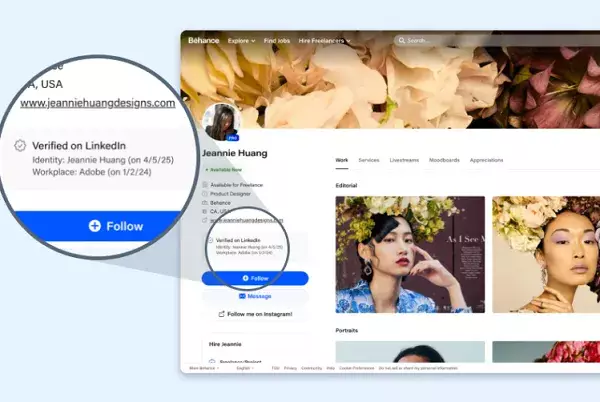In an era where trust and authenticity are paramount, LinkedIn’s recent initiative to allow third-party platforms to display its ID verification markers stands out as a game-changer in professional networking. By embedding this layer of verification across various applications, LinkedIn not only fortifies its own user ecosystem but also addresses a crucial need for greater transparency in the digital landscape. The evolution of professional identity verification represents not just a technological advancement but a significant cultural shift toward accountability in how we represent ourselves in business contexts.
The notion of validating one’s identity online is no longer a challenge restricted to LinkedIn itself; it is an emerging necessity across the entire web. By collaborating with third-party platforms, LinkedIn paves the way for a broader implementation of identity verification, thereby expanding the spectrum of trust in our digital interactions. This approach not only cultivates professional relationships but also diminishes the shadows of imposters and spam accounts that have plagued social media for years.
From Individual Verification to Common Acceptance
Initially rolled out in 2023, LinkedIn’s ID confirmation process utilized third-party providers to authenticate users’ identities, allowing them to flaunt a verification tick within their profiles. This initiative diverges from the celebrity-driven verification models prevalent on other platforms, promoting a more equitable system wherein each user, regardless of influence or wealth, can establish their legitimacy. Such a democratization of validation helps to level the playing field, making real professional merit more visible.
As reported by The Verge, LinkedIn’s collaboration with platforms like Adobe has significant implications. By integrating LinkedIn’s verification into Adobe’s Content Authenticity app and Behance, the former allows verified LinkedIn users to showcase a “Verified on LinkedIn” badge on their profiles. This not only enhances the visibility of verified professionals but also places added value on authenticity in creative fields. Thus, verified identity can coalesce with creative expression, allowing creators to attach credibility to their work seamlessly.
The Promise of a Safer Digital Environment
According to LinkedIn, over 80 million members have participated in its ID confirmation process, which underscores a growing desire among users to establish credibility in their online personas. The integration of verification across multiple digital platforms shifts the paradigm of online interactions. It confronts the insidious bots, fake accounts, and impersonations that compromise the integrity of our digital lives. Creating a vast network of verified identities can effectively shift the online conversation—encouraging users to engage with genuine content.
While some critics may argue that anonymity has its place, especially in creative and activist circles, the risks posed by unverified accounts often outweigh the benefits. Universal ID verification could deter anti-social behaviors and foster a culture of responsibility. It brings to light the importance of crafting a trustworthy online community and suggests pathways for regulatory frameworks that could require identification for social media accounts. This move is not merely about verification; it is about the future dynamics of social interaction in the professional realm.
New Frontiers in Ownership and Verification
In tandem with bolstered identity verification, LinkedIn is also expanding its support for Adobe’s “Content Credentials.” This innovation enables creators to assert ownership of their content through embedded metadata, further enhancing trust in digital creations. By linking the concepts of identity verification and content ownership, these advancements introduce another layer of assurance that is increasingly vital in an age dominated by artificial intelligence and digital manipulation.
As we navigate an era characterized by increasingly sophisticated deep fakes and manipulated content, the implications of these initiatives cannot be overstated. LinkedIn’s commitment to establishing integrity within the professional network is a step toward broader digital evolution, marking a potential template for other platforms to emulate. In this highly interconnected world, the alignment of verified identities with content authenticity could redefine the way we interact online, urging industries to adopt similar standards that prioritize both transparency and safety.
With every tick that validates a user, LinkedIn’s vision for a verifiable digital landscape becomes more achievable, demonstrating that the future of professional networking can be both authentic and accountable.

